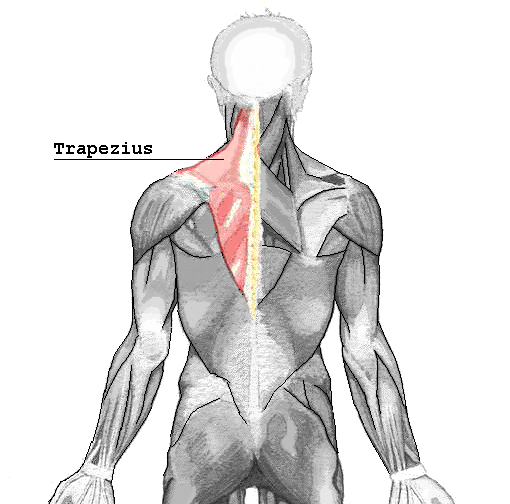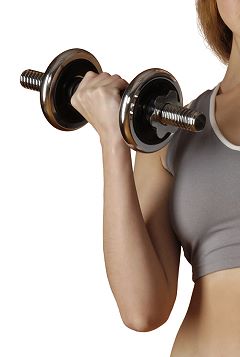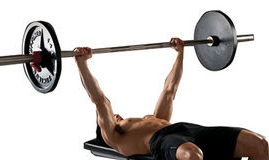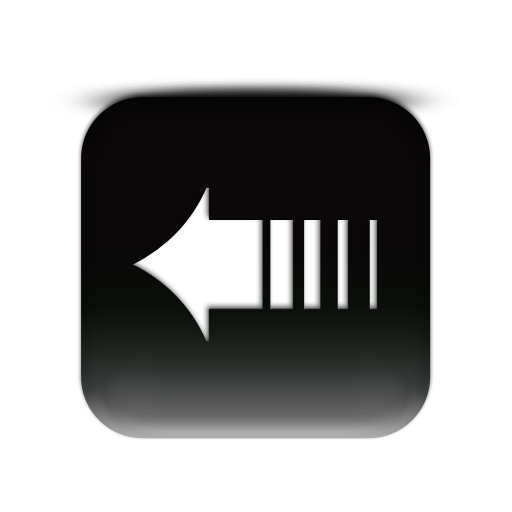If you've found this website helpful, please click the Donate button. Thanks for the support.
Find this page useful and think a friend may too? Share it!
Find this page useful and think a friend may too? Share it!
Exercise Guide
Like the site? Sign up for the FREE newsletter. I'll send a new article once or twice a month. Unsubscribe
anytime.
anytime.

About this Site l Contact l Free Newsletter l Subscribe to Rss Feed
Recommended Products l Fitness Store l Directly Fitness Blog
Recommended Products l Fitness Store l Directly Fitness Blog
HOW TO EXERCISE
Traps Exercises:
(In order of appearance)
1. Barbell Shrugs
2. Barbell Shrugs on Smith
Machine
3. Dumbbell Shrugs
4. Cable Shrugs
5. Lower Traps Extension
6. Seated Mid trap Rows
7. Standing Mid Trap Rows
2. Barbell Shrugs on Smith
Machine
3. Dumbbell Shrugs
4. Cable Shrugs
5. Lower Traps Extension
6. Seated Mid trap Rows
7. Standing Mid Trap Rows

1. Barbell Shrugs:
Starting Position:
• Stand in front of the barbell with the bar set at a height slightly higher
than arms length (near waist).
• Bend at the knees slightly.
• Grab bar with both hands in the overhand grip position.
• Palms should be facing somewhat towards body with this grip.
• Grip should be about shoulder width or slightly narrow to that on the
bar.
• Stand so your waist is touching the bar.
• Don’t stand away from bar as this can cause injury.
• Back up with barbell away from rack so when you lower the barbell it
won’t run into it.
Upward Phase:
• Initiate upward movement at the trapezius muscles.
• Imagine bringing your shoulders straight up to your ears.
• Do not bend at elbows and keep arms straight.
• Be sure to keep your chest out and shoulders back (good posture).
• Do not lead forward at any point.
• Movement is complete once you cannot raise your shoulders any
higher.
• Try to not let the bar break contact with your body at all throughout
movement.
• Bar should be rubbing against body to keep it as close as possible.
Downward Phase:
• Slowly allow shoulders to descend almost to resting position before
next repetition.
• Do not allow weight to drop as this can cause injury.
• Again maintain upright posture and don’t lean forward.
Tips:
• Some people find it easier to maintain posture and prevent forward
tilting by actually leaning back slightly.
• Looking straight up while performing this exercise may help you
maintain upright posture while maximally contracting your traps.
2. Barbell Shrugs on Smith Machine:
Starting Position:
• Stand in front of the smith machine with the bar set at a height slightly
higher than arms length (near waist).
• Bend at the knees slightly.
• Grab bar with both hands in the overhand grip position.
• Palms should be facing somewhat towards body with this grip.
• Grip should be about shoulder width or slightly narrow to that on the bar.
• Stand so your waist is touching the bar.
• Don’t stand away from bar as this can cause injury.
Upward Phase:
• Initiate upward movement at the trapezius muscles.
• Imagine bringing your shoulders straight up to your ears.
• Do not bend at elbows and keep arms straight.
• Be sure to keep your chest out and shoulders back (good posture).
• Do not lead forward at any point.
• Movement is complete once you cannot raise your shoulders any higher.
• Try to not let the bar break contact with your body at all throughout
movement.
• Bar should be rubbing against body to keep it as close as possible
Downward Phase:
• Slowly allow shoulders to descend almost to resting position before next
repetition.
• Do not allow weight to drop as this can cause injury.
• Again maintain upright posture and don’t lean forward.
Tips:
• On a smith machine you will have to often twist the bar to “unlock” and
“lock” it. You may find it easier to grip the bar more forward because you
will need to rotate the bar backward before it will unlock (And before
exercise can take place). This way your grip won’t feel crooked or twisted
during the movement.
3. Dumbbell Shrugs:
Starting Position:
• Stand in front of the dumbbell rack and squat down to pick dumbbells up
(do not bend forward to do this!).
• Stand upright with dumbbells gripped at sides (and at rest).
• Palms should be facing towards body.
• No slouching or hunching of the body should take place.
• Upright posture of the trunk and tightened abdominals should take place.
Upward Phase:
• Initiate upward movement at the trapezius muscles.
• Imagine bringing your shoulders straight up to your ears.
• Do not bend at elbows and keep arms straight.
• Be sure to keep your chest out and shoulders back (good posture).
• Do not lead forward at any point.
• Movement is complete once you cannot raise your shoulders any higher.
Downward Phase:
• Slowly allow shoulders to descend almost to resting position before next
repetition.
• Do not allow weight to drop as this can cause injury.
• Again maintain upright posture and don’t lean forward.
Tips:
• A great alternative to barbells if you don’t like the bar rubbing against you.
• The most injuries that occur happen not during the exercise, but picking
the selected dumbbells up! Use good posture and squat down to pick up,
don’t bend at waist!
4. Cable Shrugs:
Starting Position:
• Stand in front of the cable tower and use a rope or other two handed grip.
• Be sure to put setting at a low enough level to allow tension to be placed
on the traps when standing up.
• Grip can vary depending on the grip apparatus used (rope= neutral grip or
palms facing each other).
• No slouching or hunching of the body should take place.
• Upright posture of the trunk and tightened abdominals should take place.
• Squat down, grab the grip with both hands and ascend to an upright
position without leaning forward!
• Upper body should remain upright throughout
Upward Phase:
• Initiate upward movement at the trapezius muscles.
• Imagine bringing your shoulders straight up to your ears.
• Do not bend at elbows and keep arms straight.
• Be sure to keep your chest out and shoulders back (good posture).
• Do not lead forward at any point.
• Movement is complete once you cannot raise your shoulders any higher.
Downward Phase:
• Slowly allow shoulders to descend almost to resting position before next
repetition.
• Do not allow weight to drop as this can cause injury.
• Again maintain upright posture and don’t lean forward.
5. Lower Trap Extensions:
Starting Phase:
• Stand facing in front of wall as close as you can get (touching if you can).
• Place arm upward on wall at 180 degrees from resting at your side.
• You should not be facing the wall with one arm all the way raised up.
Upward Phase:
• Extend arm back as far you can without bending at elbow.
• This should be around the range of 3-6 inches.
• Don’t allow arm to lower down at all.
• Arm should only extend straight back away from wall.
• You should feel muscles working close to your spine and lower on your
back.
• If you can’t feel anything after a many repetitions, try to angle your arm
out slightly away from your body (<180 degrees).
Downward Phase:
• Allow arm to slowly come back to the wall.
• Movement is complete once arm touches the wall.
Tips:
• For best results turn head forward or away from side being exercised.
• This is a muscle group commonly weak in many people. Although the
motion may not seem big, it will save a world of pain and poor posture
later on.
No video available. Sorry for the inconvenience.
6. Seated Mid Trap Rows (Machine):
Starting Position:
• Various apparatus can be used for this exercise.
• Choose a grip apparatus where the hands are close together (this will work
the middle of your back—your middle trapezius).
• The best grip is one close in which the palms are facing each other when
used.
• Sit down on the padding.
• Upright posture of the trunk and head should be maintained.
• Feet should be place on foot platform (almost always one on machine).
• If not platform place feet at 90 degrees to the floor, flat on the floor.
• Tighten those abdominals and lean back slightly with grip in hand.
• Forearms should be parallel to the floor and at level with the belly button.
Upward Phase:
• Initiate backward movement by contracting back muscles.
• Imagine pinching your shoulder blades together.
• Bring elbows all the way until they form a 90 degree angle.
• Be sure to keep your chest out and shoulders back (good posture).
• Do not lead forward at any point or round back!
• Pull grip to your sternum or right beneath your chest.
• Movement is complete once grip reaches this point.
• Keep elbows pinched at sides throughout motion.
Downward Phase:
• Slowly allow weight to guide your motion out but stop just shy of full arm
extension.
• This will keep tension on middle traps.
• Repeat the desired repetitions.
• When ready to stop bend at knees before letting go of the grip.
• Don’t allow grip to snap back! Slowly and gently guide it back to the
resting position.
• Keep your back upright when letting grip go, again do not round.
Tips:
• If you want to really work those muscles, squeeze at you middle back
together/shoulder blades together at the top of the movement and pause.
• No matter how much weight is used keep good posture and do not round
back. This can injure your muscles and ligaments in your lower back! Keep
that slight curvature of your lower back at all times.
7. Standing Mid Trap Rows (Cable):
Starting Position:
• Various apparatus can be used for this exercise.
• Choose a grip apparatus where the hands are close together (this will work
the middle of your back—your middle trapezius).
• The best grip is one close in which the palms are facing each other when
used.
• Set cable pulley slightly above waist level.
• Feet should be wider than should width.
• Grip handle and pull weight back so when you straighten your arms out the
weight isn’t resting (keeping tension on your body).
• Bend at knees and squat down 4-5 inches or until grip is at sternum level.
• Tighten those abdominals and lean back slightly with grip in hand.
• Forearms should be parallel to the floor and at level with the belly button.
Upward Phase:
• Initiate backward movement by contracting back muscles.
• Imagine pinching your shoulder blades together.
• Bring elbows all the way until they form a 90 degree angle.
• Be sure to keep your chest out and shoulders back (good posture).
• Do not lead forward at any point or round back!
• Pull grip to your sternum or right beneath your chest.
• Movement is complete once grip reaches this point.
• Keep elbows pinched at sides throughout motion.
Downward Phase:
• Slowly allow weight to guide your motion out but stop just shy of full arm
extension.
• This will keep tension on middle traps.
• Repeat the desired repetitions.
• When ready to stop step forward with weight and good back posture.
• Don’t allow grip to snap back! Slowly and gently guide it back to the
resting position.
• Keep your back upright when letting grip go, again do not round.
Exercises:
Trapezius




